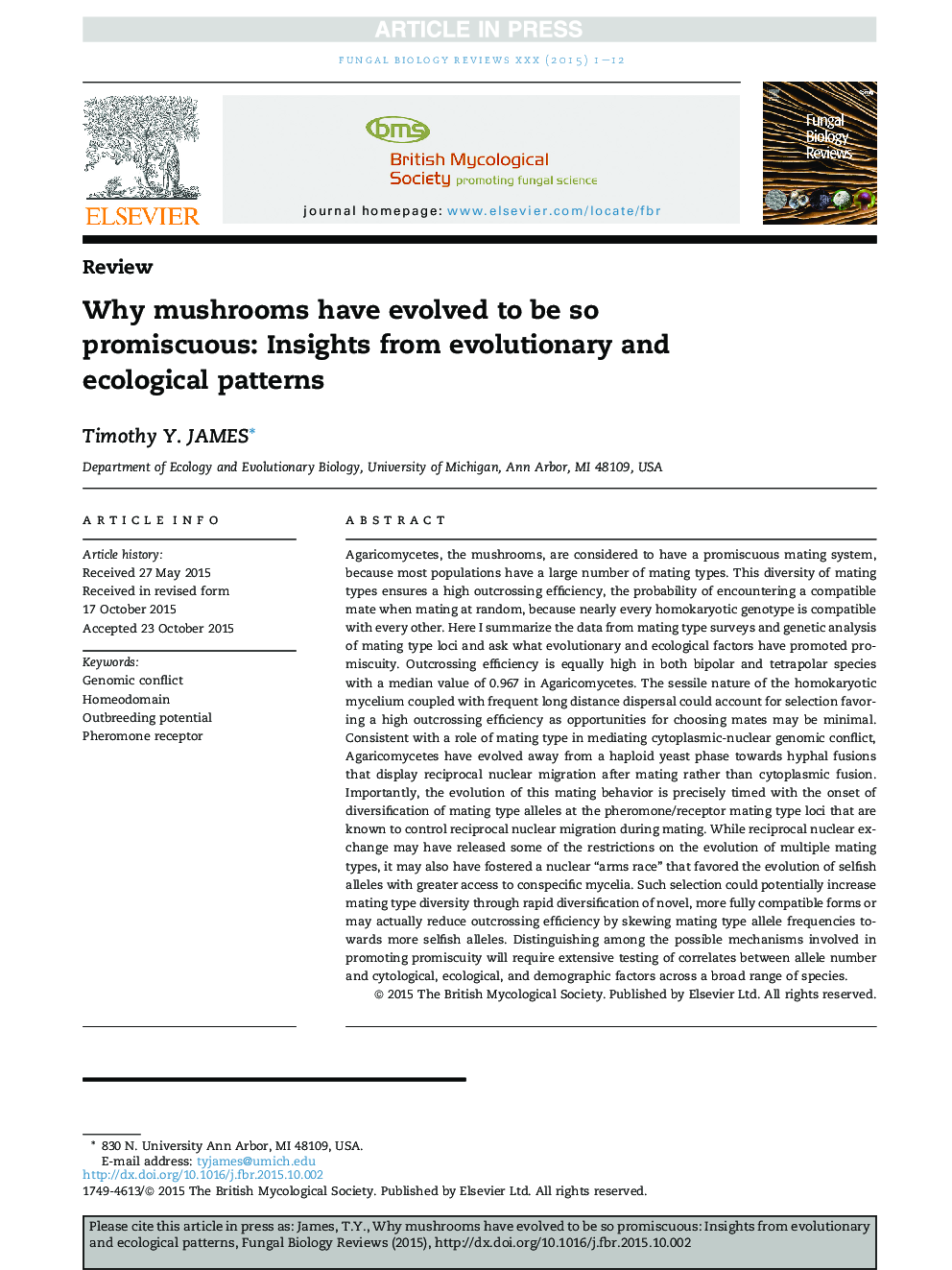| کد مقاله | کد نشریه | سال انتشار | مقاله انگلیسی | نسخه تمام متن |
|---|---|---|---|---|
| 8470378 | 1549961 | 2015 | 12 صفحه PDF | دانلود رایگان |
عنوان انگلیسی مقاله ISI
Why mushrooms have evolved to be so promiscuous: Insights from evolutionary and ecological patterns
ترجمه فارسی عنوان
چرا قارچ ها به گونه ای بی روح تبدیل شده اند: بینش از الگوهای تکاملی و زیست محیطی
دانلود مقاله + سفارش ترجمه
دانلود مقاله ISI انگلیسی
رایگان برای ایرانیان
کلمات کلیدی
درگیری ژنومی، هومیوودین پتانسیل کشت گیرنده فرومون،
موضوعات مرتبط
علوم زیستی و بیوفناوری
علوم کشاورزی و بیولوژیک
علوم کشاورزی و بیولوژیک (عمومی)
چکیده انگلیسی
Agaricomycetes, the mushrooms, are considered to have a promiscuous mating system, because most populations have a large number of mating types. This diversity of mating types ensures a high outcrossing efficiency, the probability of encountering a compatible mate when mating at random, because nearly every homokaryotic genotype is compatible with every other. Here I summarize the data from mating type surveys and genetic analysis of mating type loci and ask what evolutionary and ecological factors have promoted promiscuity. Outcrossing efficiency is equally high in both bipolar and tetrapolar species with a median value of 0.967 in Agaricomycetes. The sessile nature of the homokaryotic mycelium coupled with frequent long distance dispersal could account for selection favoring a high outcrossing efficiency as opportunities for choosing mates may be minimal. Consistent with a role of mating type in mediating cytoplasmic-nuclear genomic conflict, Agaricomycetes have evolved away from a haploid yeast phase towards hyphal fusions that display reciprocal nuclear migration after mating rather than cytoplasmic fusion. Importantly, the evolution of this mating behavior is precisely timed with the onset of diversification of mating type alleles at the pheromone/receptor mating type loci that are known to control reciprocal nuclear migration during mating. While reciprocal nuclear exchange may have released some of the restrictions on the evolution of multiple mating types, it may also have fostered a nuclear “arms race” that favored the evolution of selfish alleles with greater access to conspecific mycelia. Such selection could potentially increase mating type diversity through rapid diversification of novel, more fully compatible forms or may actually reduce outcrossing efficiency by skewing mating type allele frequencies towards more selfish alleles. Distinguishing among the possible mechanisms involved in promoting promiscuity will require extensive testing of correlates between allele number and cytological, ecological, and demographic factors across a broad range of species.
ناشر
Database: Elsevier - ScienceDirect (ساینس دایرکت)
Journal: Fungal Biology Reviews - Volume 29, Issues 3â4, December 2015, Pages 167-178
Journal: Fungal Biology Reviews - Volume 29, Issues 3â4, December 2015, Pages 167-178
نویسندگان
Timothy Y. James,
